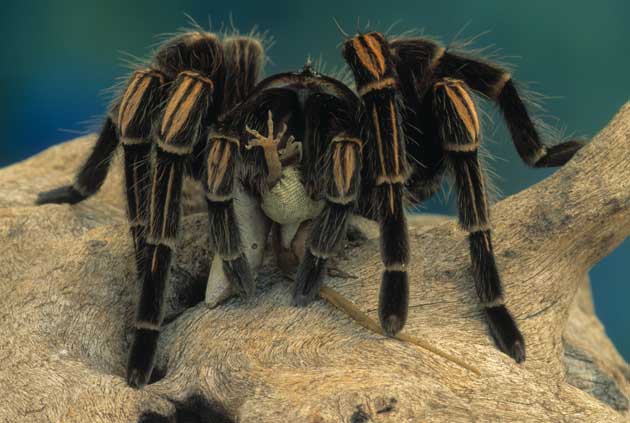Pet of the week: The Goliath Birdeater

Your support helps us to tell the story
From reproductive rights to climate change to Big Tech, The Independent is on the ground when the story is developing. Whether it's investigating the financials of Elon Musk's pro-Trump PAC or producing our latest documentary, 'The A Word', which shines a light on the American women fighting for reproductive rights, we know how important it is to parse out the facts from the messaging.
At such a critical moment in US history, we need reporters on the ground. Your donation allows us to keep sending journalists to speak to both sides of the story.
The Independent is trusted by Americans across the entire political spectrum. And unlike many other quality news outlets, we choose not to lock Americans out of our reporting and analysis with paywalls. We believe quality journalism should be available to everyone, paid for by those who can afford it.
Your support makes all the difference.Who is this fearsome-looking beast? Theraphosa blondi, the largest mygalomorph there is, with a leg span equivalent to a small dinner plate (up to 12 inches). This is most definitely not an itsy-bitsy spider, climbing up the wall. In fact, he is so heavy that climbing up walls is probably not an option, being as he weighs more than your average mouse.
And does he really eat birds? No. The story goes that a Victorian explorer spotted one of these fellows on an Amazonian trip, watched it devouring a hummingbird and gave it its name. Generally, though, the Goliath sticks to crickets, insects and the occasional rodent.
Wouldn't want to find him in my sock drawer ... Most unlikely, as his natural habitat is the swamplands of northern South America. The natives consider these spiders a delicacy, but if they don't get eaten by humans, the males end up on the menu of their paramours.
Meaning? Meaning that once the male Goliath has done his family duty, he is usually killed or maimed by the female. New York divorce lawyers, take note.
Why would I want him as a pet? Well, they don't actually make good pets, as they are quite aggressive. But other species of tarantula are happy to be kept, and relatively easy to look after. Mature spiders (say, more than 3 years) will only need feeding on crickets (available from pet stores) once a week, and they don't need large terrariums. The Goliath is a burrower and would need an enclosed environment to mimic its habitat, but it's strictly for those with arachnid experience. Handling is proven to be more stressful for the spider than for the handler. Not that I'd ever have the guts to put that to the test.
Where can I find out more? If you are keen to own a tarantula, then there are many more friendly species, such as the Chile rose, the curly-haired and the Mexican red knee. One person who knows all about our eight-legged friends is Karen Baker of Exotic Pets (01246 568390; exotic-pets.co.uk) who is based in the less than tropical, but no less beautiful, Derbyshire.
Join our commenting forum
Join thought-provoking conversations, follow other Independent readers and see their replies
Comments